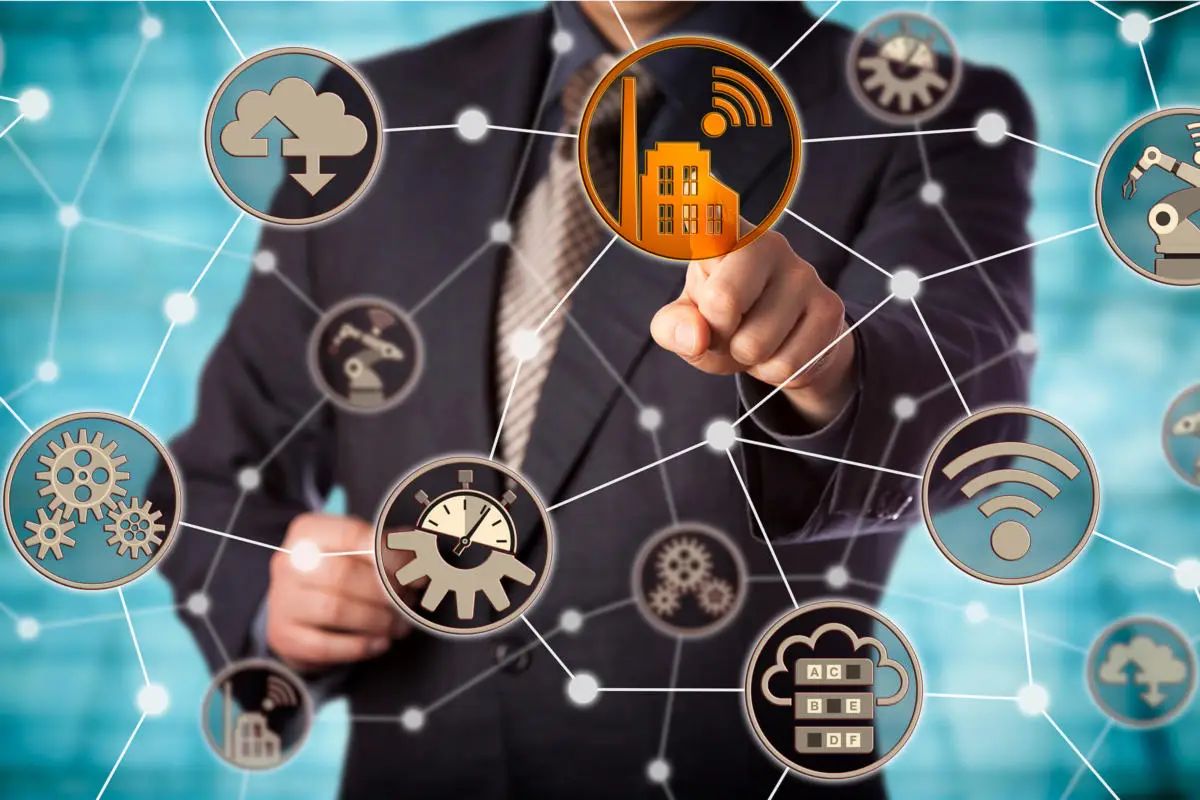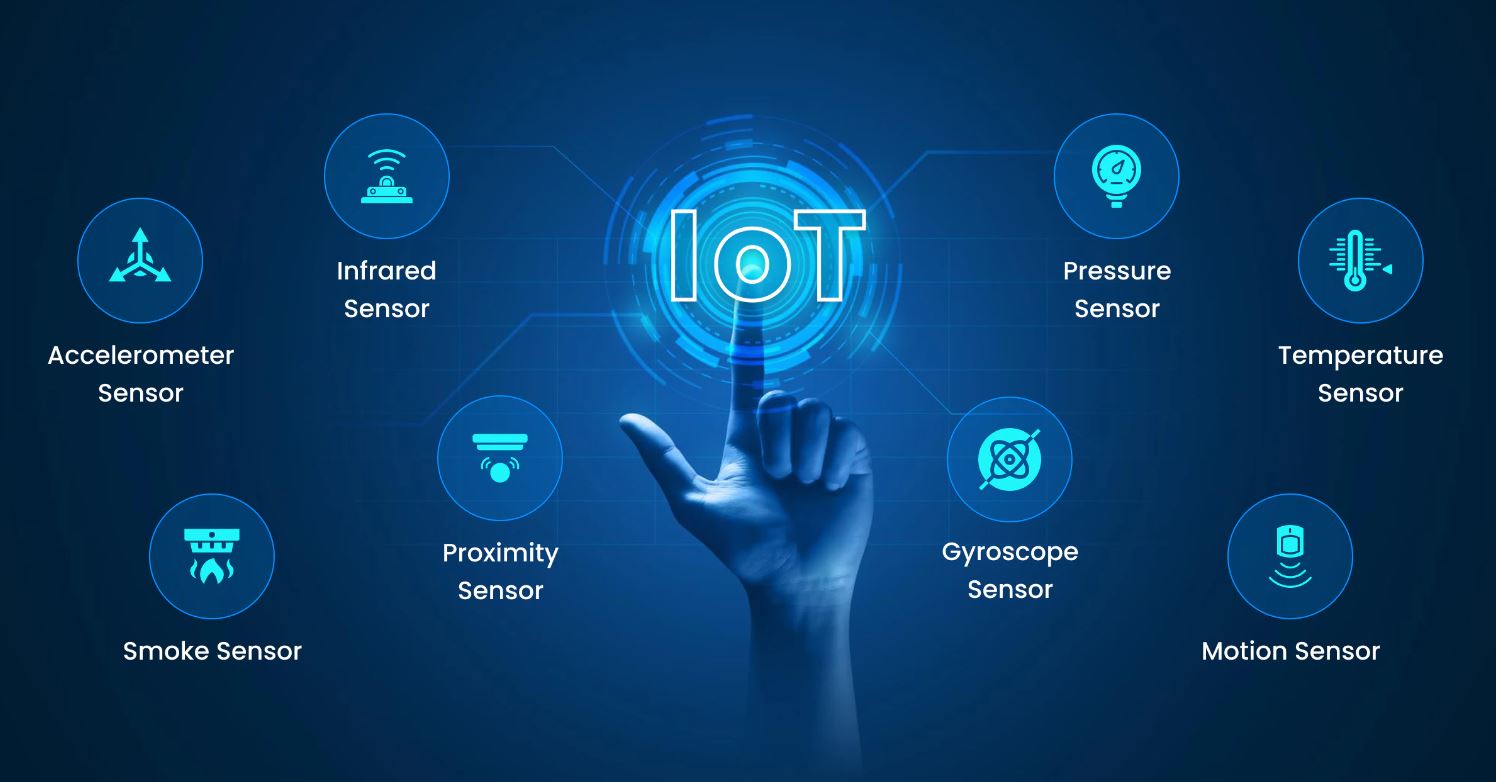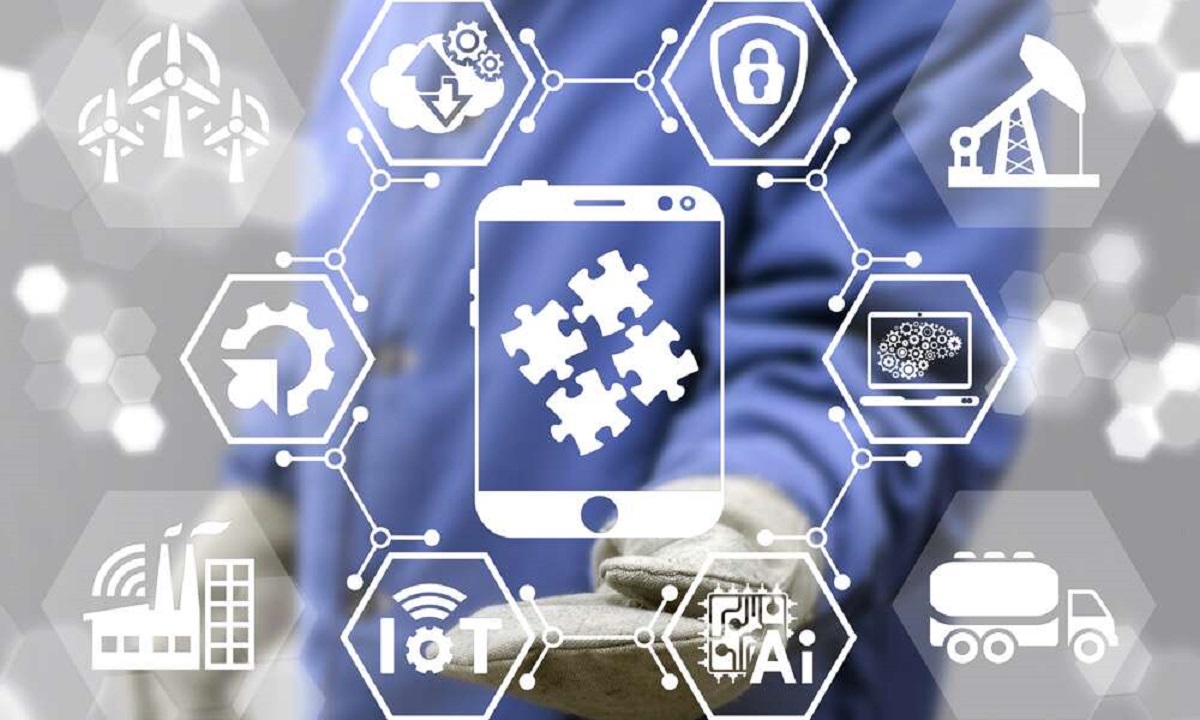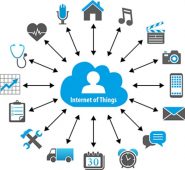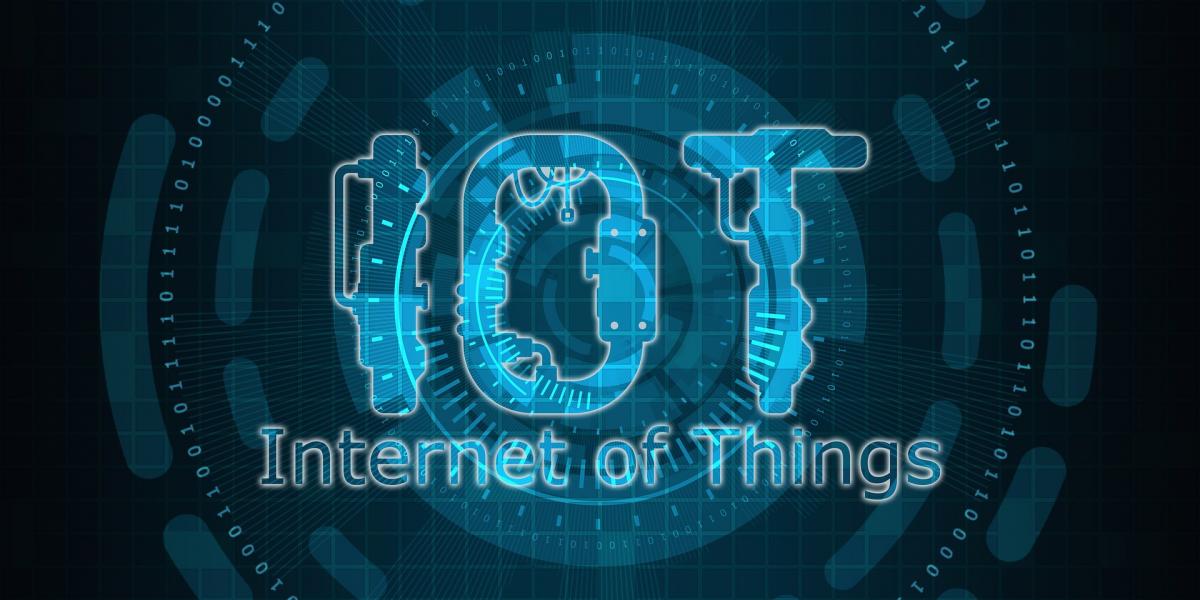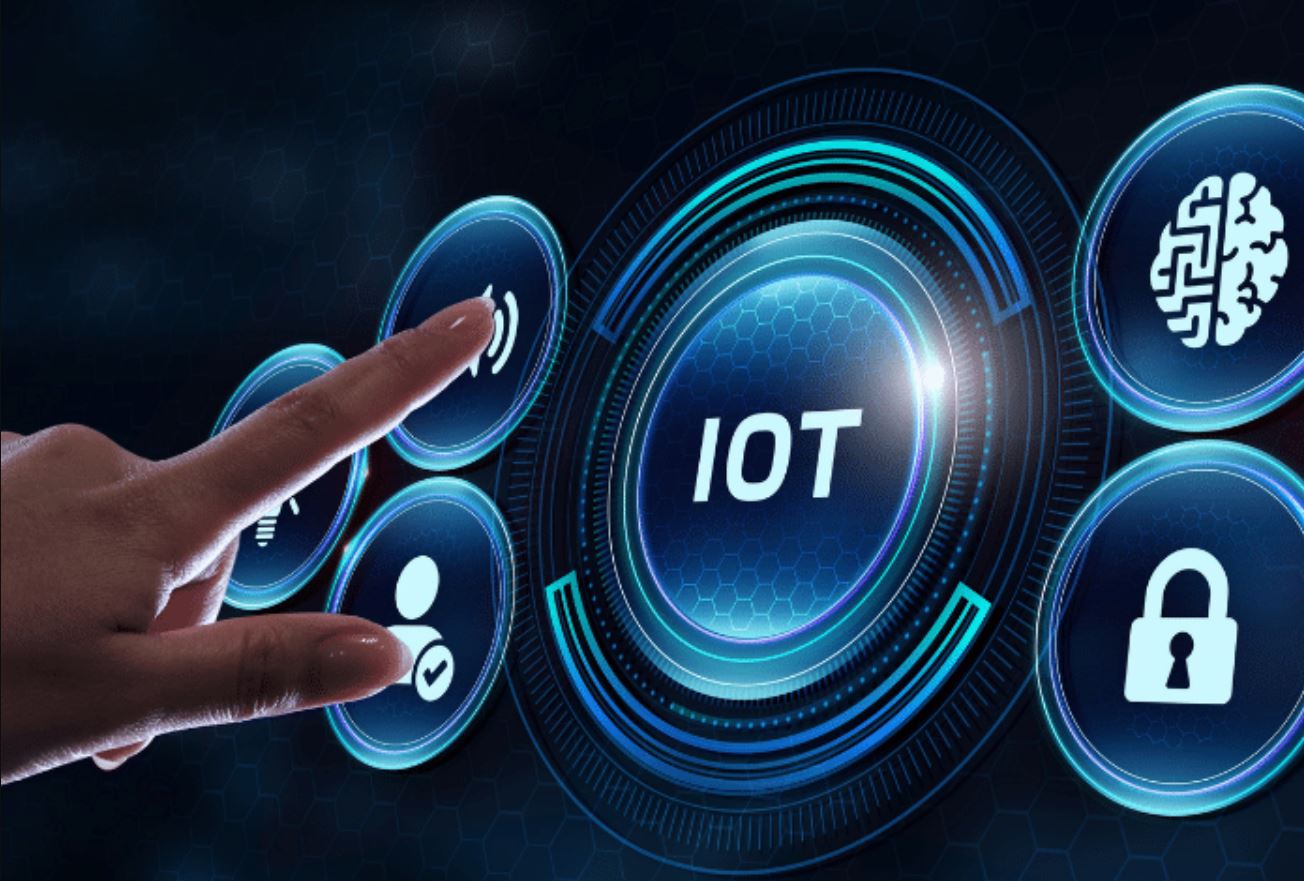Introduction
Welcome to the world of the Internet of Things (IoT), where the interconnection of devices and the exchange of data have revolutionized how we live and work. In this ever-expanding network of connected devices, Machine to Machine (M2M) communication plays a pivotal role. M2M in IoT refers to the direct communication and interaction between devices without human intervention. It enables devices to seamlessly share information, make intelligent decisions, and perform actions based on the received data.
M2M in IoT is rapidly transforming various industries, including healthcare, manufacturing, transportation, agriculture, and many more. The exponential growth of M2M connections is driven by the advancements in wireless technology, reduced cost of sensors and devices, and the increased availability of high-speed internet connectivity. This has paved the way for a smarter and more connected world, where devices communicate with each other to collect, analyze, and utilize data in real-time.
The importance of M2M in IoT lies in its ability to enable automation, improve efficiency, enhance decision-making processes, and create new business models. By connecting and enabling communication between devices, M2M in IoT eliminates the need for manual intervention, reducing human errors and increasing productivity. It allows for the seamless integration of physical and digital systems, leading to improved operational efficiency, cost savings, and enhanced customer experiences.
Moreover, M2M in IoT enables businesses to gather vast amounts of data from connected devices, empowering them with valuable insights and intelligence. This data can be used to optimize processes, predict and prevent equipment failures, monitor and control systems remotely, and drive informed decision-making. With M2M communication, businesses can unlock the full potential of IoT, leveraging the power of real-time information to create innovative products and services.
The applications of M2M in IoT are diverse and span across various industries. In the healthcare sector, M2M technology enables remote patient monitoring, improving healthcare outcomes and reducing the burden on healthcare systems. In manufacturing, M2M communication streamlines production processes, enables predictive maintenance, and facilitates supply chain optimization. In transportation, M2M enables fleet management, asset tracking, and real-time logistics monitoring. The possibilities are endless, and the potential for innovation and transformation is immense.
Definition of M2M in IoT
Machine to Machine (M2M) communication in the context of the Internet of Things (IoT) refers to the direct exchange of data between devices without human intervention. It involves the seamless connection and interaction of devices, enabling them to exchange information and perform actions based on the received data. M2M in IoT enables devices to communicate with each other, share data, and collaborate to accomplish tasks efficiently and autonomously.
In M2M communication, devices, often equipped with sensors and actuators, collect data from their environment or perform specific actions based on received instructions. This data can include temperature readings, pressure levels, location coordinates, and much more, depending on the purpose and functionality of the devices involved. The devices transmit the collected data over wired or wireless networks, allowing other devices or systems to receive, interpret, and act upon it.
The communication between devices in M2M happens through various protocols, including but not limited to Wi-Fi, Bluetooth, cellular networks, and LoRaWAN. These protocols ensure reliable and secure data transmission between devices, even across vast distances. M2M communication can occur in a one-to-one (device-to-device) or one-to-many (device-to-multiple devices) fashion, depending on the specific application and requirements.
M2M in IoT enables a wide range of applications across diverse industries. For example, in agriculture, M2M communication can be utilized to monitor soil moisture levels, automate irrigation systems, and control the use of fertilizers based on real-time data. In healthcare, M2M enables the remote monitoring of patients’ vital signs, allowing healthcare professionals to provide timely interventions and improve patient outcomes. In logistics and transportation, M2M communication allows for tracking and managing the location and condition of goods in real-time, ensuring efficient supply chain management.
Overall, M2M in IoT provides the foundation for a connected ecosystem, where devices seamlessly communicate, share data, and collaborate to deliver enhanced functionality, efficiency, and convenience. It empowers businesses and individuals to harness the power of automation, real-time data exchange, and intelligent decision-making, leading to a more connected and intelligent world.
Importance of M2M in IoT
M2M communication in the Internet of Things (IoT) plays a crucial role in shaping the future of various industries and everyday life. The importance of M2M in IoT lies in its ability to enable automation, enhance efficiency, improve decision-making processes, and create new business opportunities.
One of the key benefits of M2M in IoT is the ability to automate processes and reduce human intervention. By enabling devices to directly communicate and interact with each other, M2M eliminates the need for manual input and reduces human errors. This automation leads to improved efficiency, increased productivity, and cost savings for businesses. Tasks that were once time-consuming and prone to errors can now be seamlessly executed by machines, allowing human resources to focus on more complex and value-added activities.
M2M in IoT also empowers businesses with real-time data collection and analysis. Connected devices equipped with sensors gather vast amounts of data from their environment, allowing businesses to gain valuable insights and make informed decisions. For example, in the manufacturing industry, M2M communication enables predictive maintenance, where machines can anticipate equipment failures based on data analysis and take corrective actions before any disruption occurs. This proactive approach helps businesses avoid costly downtime and optimize their maintenance schedules.
Furthermore, M2M in IoT opens up new possibilities for creating innovative products and services. By utilizing the data generated by connected devices, businesses can develop personalized and intelligent solutions to cater to individual needs and preferences. For instance, in the retail industry, M2M communication allows for the creation of smart shelves that automatically track inventory levels, reorder products, and provide personalized recommendations to shoppers. This level of automation and customization enhances the customer experience and drives customer loyalty.
M2M in IoT also has significant implications for sectors such as healthcare and transportation. In healthcare, M2M enables remote patient monitoring, where patients can be monitored and their vital signs can be transmitted to healthcare providers in real-time. This technology allows for early detection of abnormalities and timely interventions, leading to better healthcare outcomes. In transportation, M2M communication facilitates fleet management, asset tracking, and real-time logistics monitoring, leading to efficient logistics operations and improved supply chain management.
The importance of M2M in IoT is undeniable. It has the potential to revolutionize industries, making processes more efficient, enhancing decision-making capabilities, and unleashing new opportunities for innovation. As technology continues to advance and connectivity becomes ubiquitous, the impact of M2M in IoT is poised to grow even further, reshaping the way we live, work, and interact with the world around us.
Applications of M2M in IoT
M2M communication in the Internet of Things (IoT) has a wide range of applications across various industries, revolutionizing the way businesses operate and individuals interact with their environment. From healthcare to manufacturing to transportation, the applications of M2M in IoT are diverse and have immense potential for transformation.
In the healthcare sector, M2M in IoT enables remote patient monitoring, improving healthcare outcomes and reducing the burden on healthcare systems. Connected devices, such as wearables or implanted sensors, collect vital signs and transmit the data to healthcare professionals in real-time. This allows for continuous monitoring of patients’ health conditions, early detection of abnormalities, and timely interventions. M2M in healthcare also enables telemedicine services, where doctors can provide remote consultations and monitor patients’ progress without the need for in-person visits.
In the manufacturing industry, M2M communication streamlines production processes and enhances operational efficiency. Connected sensors embedded in machines and equipment collect data on various parameters such as temperature, pressure, and vibrations. This data is transmitted in real-time to monitoring systems, enabling predictive maintenance. By analyzing the data and detecting anomalies, businesses can proactively schedule maintenance activities, optimize equipment performance, and prevent costly breakdowns. M2M in manufacturing also facilitates inventory management, supply chain optimization, and quality control.
The transportation industry also benefits greatly from M2M in IoT. Fleet management systems utilize M2M communication to track and manage the location, condition, and performance of vehicles, enabling efficient logistics operations. Asset tracking systems powered by M2M allow businesses to monitor the movement and status of high-value assets, ensuring their security and optimizing utilization. Additionally, real-time data from traffic sensors and IoT-connected vehicles can be used to develop intelligent transportation systems, improving traffic flow, reducing congestion, and enhancing overall transportation efficiency.
Smart cities are another domain where M2M in IoT finds significant application. Sensors and devices connected through M2M communication enable smart energy grids, optimizing energy distribution and consumption. Waste management systems utilize M2M technology to monitor trash levels in bins, optimizing collection routes and reducing operational costs. Smart lighting systems use M2M communication to adjust lighting levels based on traffic patterns, saving energy and enhancing safety. M2M in smart cities also enables smart parking systems, air quality monitoring, and public safety initiatives.
Other notable applications of M2M in IoT include agriculture, where M2M communication is used for automated irrigation systems, soil monitoring, and livestock tracking. In retail, M2M empowers businesses with smart shelves that automatically track inventory levels and provide personalized recommendations to shoppers. Home automation systems utilize M2M communication to control various aspects of homes, such as lighting, security systems, and temperature, providing convenience and energy efficiency.
These applications of M2M in IoT are just a glimpse of the potential impact on various industries. As technology continues to advance and connectivity becomes more pervasive, the possibilities for leveraging M2M in IoT will continue to grow, driving innovation, efficiency, and convenience in our daily lives.
Advantages and Benefits of M2M in IoT
M2M communication in the Internet of Things (IoT) brings a multitude of advantages and benefits to businesses, industries, and individuals. The seamless connectivity and information exchange between devices through M2M in IoT create a range of transformative opportunities.
One of the key advantages of M2M in IoT is automation. By enabling direct communication between devices, M2M eliminates the need for manual intervention and reduces human errors. Automated processes result in improved efficiency, increased productivity, and cost savings for businesses. Tasks that were once time-consuming and prone to errors can now be seamlessly executed by machines, allowing human resources to focus on more strategic and creative endeavors.
Another significant benefit of M2M in IoT is real-time data collection and analysis. Connected devices equipped with sensors gather vast amounts of data from their environment, providing valuable insights for businesses. This data can be analyzed to optimize processes, predict and prevent failures, and make informed decisions. With M2M, businesses can tap into the power of real-time information, leading to enhanced decision-making capabilities and the ability to adapt quickly to changing circumstances.
M2M in IoT also enables businesses to improve their customer experiences. Connected devices can gather data on customer preferences, behaviors, and patterns. This information can be utilized to personalize services, offer customized recommendations, and provide tailored experiences. For example, in the retail industry, M2M communication allows for smart shelves that automatically track inventory levels and provide real-time product recommendations to shoppers, enhancing their shopping experience and driving customer loyalty.
With the increasing connectivity and interactivity of devices through M2M in IoT, new business models and revenue streams can be created. Companies can offer value-added services based on the continuous data exchange between devices. For instance, in the industrial sector, equipment manufacturers can offer performance monitoring and predictive maintenance services to their customers, ensuring optimal performance and reducing equipment downtime. M2M opens up opportunities for businesses to deliver ongoing services, establish long-term relationships with customers, and generate recurring revenue.
M2M in IoT also improves safety and security. Connected devices can monitor and detect anomalies in real-time, allowing for rapid response and mitigation of potential risks. For instance, in the transportation industry, M2M communication enables real-time tracking of vehicles and cargo, reducing the risk of theft or loss. Similarly, in the healthcare sector, remote patient monitoring using M2M technology ensures timely interventions and increased patient safety.
Furthermore, M2M in IoT enables businesses to optimize resource utilization. Data collected from connected devices can be analyzed to identify inefficiencies, reduce wastage, and streamline operations. This optimization leads to cost savings and sustainable practices in sectors such as energy management, logistics, and agriculture.
Overall, the advantages and benefits of M2M in IoT are far-reaching. From automation to real-time data insights to personalized experiences, M2M in IoT empowers businesses to operate more efficiently, make smarter decisions, create value-added services, enhance customer satisfaction, and drive innovation in various industries.
Challenges and Limitations of M2M in IoT
While Machine to Machine (M2M) communication in the Internet of Things (IoT) holds immense potential, it also presents certain challenges and limitations that need to be addressed for its widespread adoption and effective implementation.
One of the primary challenges of M2M in IoT is the issue of interoperability. With a wide range of devices, protocols, and standards in the IoT ecosystem, ensuring seamless communication and compatibility between different devices can be complex. Interoperability issues can hinder the seamless exchange of data and the ability of devices to collaborate effectively. Harmonizing protocols and creating industry standards are critical to overcome this challenge and enable smooth M2M communication.
Data security and privacy is another significant challenge in M2M in IoT. With the vast amount of data being generated and transmitted between devices, ensuring the confidentiality, integrity, and availability of this data is of paramount importance. M2M communication requires robust encryption algorithms, secure authentication mechanisms, and data privacy frameworks to protect sensitive information from unauthorized access or misuse.
Scalability poses a challenge for M2M in IoT. As the number of connected devices and data traffic increases, the existing infrastructure may face limitations in terms of bandwidth, storage capacity, and processing power. Scaling up the infrastructure to accommodate the growing M2M ecosystem becomes crucial to ensure smooth communication and efficient data handling.
Connectivity and network coverage are limitations for M2M in IoT, especially in remote or rural areas. While urban areas generally have a reliable internet connection, ensuring seamless connectivity in remote locations or areas with limited network coverage can be challenging. Enhancing network infrastructure and exploring alternative connectivity options, such as Low Power Wide Area Networks (LPWANs), can help overcome these limitations and extend the reach of M2M communication.
M2M in IoT also faces challenges related to power efficiency and battery life. Many IoT devices are battery-powered, and frequent communication and data transmission can drain the battery quickly. Optimizing power consumption and implementing energy-efficient communication protocols are essential to ensure long battery life and maximize the efficiency of devices in the M2M ecosystem.
Furthermore, the complexity of deploying and managing large-scale M2M systems is a challenge for organizations. Integrating diverse devices, managing configurations, and ensuring proper maintenance and updates require robust management systems and skilled personnel. Providing user-friendly tools and simplified management interfaces can help organizations overcome these challenges and facilitate the adoption and management of M2M in IoT.
Lastly, the cost associated with implementing M2M in IoT can be a limitation for some businesses. IoT devices, sensors, and infrastructure investment could pose financial challenges, especially for small and medium-sized enterprises. Additionally, ongoing maintenance and upgrading costs should be considered for long-term sustainability of the M2M ecosystem.
Addressing these challenges and limitations through technological advancements, collaborative efforts, and regulatory frameworks is crucial to harnessing the full potential of M2M in IoT and ensuring its seamless integration in various industries and everyday life.
Future Prospects and Trends of M2M in IoT
The future of Machine to Machine (M2M) communication in the Internet of Things (IoT) holds immense potential and promises to reshape industries and everyday life. As technology continues to evolve and connectivity becomes ubiquitous, several trends and prospects are emerging that will shape the future of M2M in IoT.
One of the key trends in M2M in IoT is the convergence of technologies, such as edge computing, artificial intelligence (AI), and 5G connectivity. Edge computing enables data processing and analysis at the edge of the network, reducing latency and enhancing real-time decision-making capabilities. AI algorithms embedded in M2M systems enable intelligent data analysis and automation, leading to more efficient and self-learning systems. The advent of 5G networks with lower latency and higher bandwidth will unlock new opportunities for faster and more reliable M2M communication, enabling real-time data exchange and supporting advanced applications.
Another significant trend is the integration of M2M in IoT with other emerging technologies like blockchain and augmented reality (AR). Blockchain technology enhances the security and privacy of M2M transactions by providing immutable and decentralized data storage and verification. AR technologies, when combined with M2M communication, can enable real-time visual information overlay and remote assistance, enhancing fields like maintenance and healthcare.
The trend towards more interconnected ecosystems, such as smart cities and smart homes, will drive the expansion of M2M in IoT. As more devices and systems become connected, the possibilities for M2M communication increase. In smart cities, M2M networks will enable better traffic management, efficient energy distribution, and improved public services. In smart homes, M2M will enhance automation, energy management, and personalized experiences.
Furthermore, there is a growing focus on data analytics and machine learning in M2M in IoT. The proliferation of connected devices generates vast amounts of data, which can be harnessed to gain valuable insights and drive informed decision-making. Machine learning algorithms applied to M2M data can enable predictive analytics, anomaly detection, and optimization of processes, leading to improved efficiency and cost savings.
As M2M in IoT continues to evolve, there will be an increasing emphasis on sustainability and energy efficiency. IoT devices and M2M networks will be designed to operate with low power consumption, leveraging energy harvesting techniques and efficient transmission protocols. This focus on sustainability aligns with the global efforts to reduce carbon footprints and create more environmentally friendly and energy-efficient systems.
Furthermore, the expansion of M2M in IoT will bring about new business models and revenue streams. Companies will increasingly shift from selling products to offering services based on M2M connectivity. This shift will enable businesses to provide value-added services, establish long-term relationships with customers, and generate recurring revenue streams.
In summary, the future of M2M in IoT looks promising, with trends such as technology convergence, interconnected ecosystems, advanced analytics, sustainability, and evolving business models driving its growth. As these trends continue to unfold, M2M in IoT will contribute to a more connected, intelligent, and efficient world, transforming industries and improving the way we live, work, and interact with technology.
Conclusion
The advent of Machine to Machine (M2M) communication in the Internet of Things (IoT) has ushered in a new era of connectivity and automation. M2M in IoT enables devices to seamlessly communicate, share data, and collaborate without human intervention, leading to improved efficiency, enhanced decision-making processes, and new possibilities for innovation.
The applications of M2M in IoT are vast and diverse, spanning across industries such as healthcare, manufacturing, transportation, agriculture, and beyond. From remote patient monitoring to predictive maintenance to smart city solutions, M2M in IoT is transforming the way businesses operate and individuals interact with their environment.
There are numerous advantages and benefits of M2M in IoT. Automation reduces human errors, improves productivity, and enables businesses to focus on more value-added activities. Real-time data collection and analysis empower businesses with valuable insights, enhancing decision-making capabilities. Personalized experiences and value-added services create new opportunities for businesses to engage customers and increase customer loyalty. M2M in IoT also improves safety, enables resource optimization, and drives innovation across industries.
However, there are also challenges and limitations that need to be addressed. Interoperability, data security, scalability, connectivity, power efficiency, deployment complexity, and cost are among the challenges that need attention to ensure the successful adoption and implementation of M2M in IoT.
The future prospects and trends of M2M in IoT showcase immense potential. The convergence of technologies, integration with other emerging technologies, interconnected ecosystems, focus on data analytics and machine learning, sustainability, and evolving business models are shaping the future of M2M in IoT. As these trends continue to unfold, M2M in IoT will play a critical role in creating a more connected, intelligent, and efficient world.
In conclusion, M2M in IoT has revolutionized the way devices communicate and collaborate, driving automation, efficiency, and innovation. While there are challenges to overcome, the tremendous benefits and promising future prospects make M2M in IoT a compelling force that will shape industries and everyday life in the years to come.







